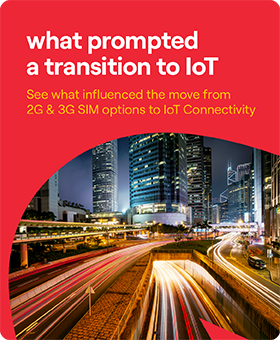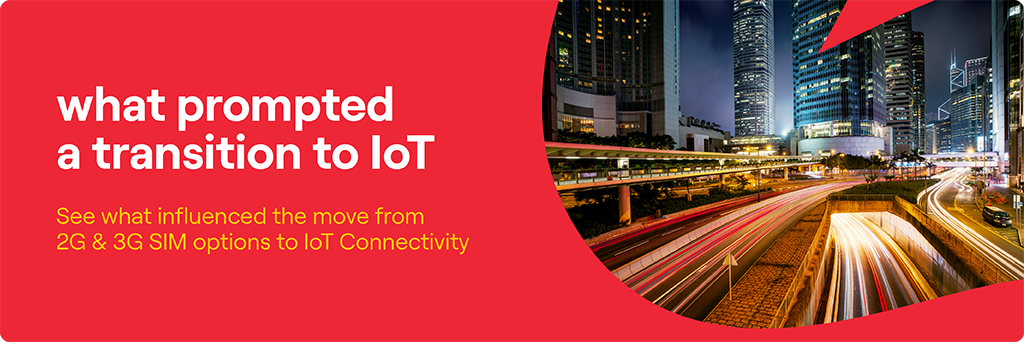frequently searched on Vi
Published on 25th April, 2024
Published by Vi Business
Transition of IoT Connectivity
In 2022, global IoT (or Internet of Things) connections grew by 18%, thus increasing the number of IoT endpoints to over 14.3 billion (source:www.iotbusinessnews.com). IoT connectivity is all about the network of connected IoT devices that can share data. This includes a mix of everyday devices like household and personal devices.
The Internet is the foundation of the IoT ecosystem, which facilitates communication through linked IoT devices, sensors, and cloud platforms. Thanks to its global reach, cellular IoT is the most common form of IoT connectivity. Here’s how IoT connectivity has transitioned from an infrastructure to a software platform:
From Infrastructure to Software
In recent years, IoT connectivity has gradually transformed from an infrastructure-based platform to a powerful and feature-heavy software platform. One such development is the emergence of Connectivity Management Platforms (CMPs). With a CMP, organisations now have complete end-to-end visibility and control over their IoT devices and networks.
A CMP is not a new development and has existed for the last 3 to 5 years. Most of the CMP users were mobile network operators. This is slowly beginning to change. The IoT connectivity management platform's market size is expected to reach $34.7 billion by the year 2033 (source: www.futuremarketinsights.com).
On the functionality level, CMP is evolving from 2G/3G SIM management to more advanced options including:
- eSIM or Remote SIM Provisioning
- Advanced Analytics
- Global Connectivity
- Core Network Functionality
Here’s a detailed look at the various technologies used in IoT connectivity:
1. Wi-Fi
Wi-Fi technology is widely used to connect IoT devices within a particular area. Along with its reliability, Wi-Fi uses a wireless network to provide high-speed data transfer.
In the IoT domain, smart speakers like Amazon Echo and Google Home leverage Wi-Fi technology to enable voice-controlled functionalities on home speakers.
2. Bluetooth
Used for short-distance wireless communication, Bluetooth is another common technology used for IoT devices. Bluetooth is ideal for connecting devices located nearby. Applications like audio streaming, home automation, and wearables commonly use Bluetooth technology.
3. Zigbee
Zigbee is a low-power communication technology typically used for IoT applications with low data requirements and high-power constraints. Applications like smart home automation and lighting control use Zigbee technology.
For instance, Zigbee-powered light bulbs enable smart lighting, which is controllable from a smartphone app or centralised hub.
4. LoRaWAN
Short for Long Range Wide Area Network, LoRaWAN technology is designed for low-power devices that need to send data over a long distance. For instance, smart IoT systems in the agriculture domain use LoRaWAN-powered sensors to measure and record soil moisture, temperature, and humidity.
5. NB-IoT
Narrowband IoT (or NB-IoT) is a low-power WAN technology that is used specifically for IoT devices. Using cellular networks, it can connect devices over long distances, with minimum power consumption. NB-IoT is best suited for IoT solutions such as smart metering, environment monitoring, and smart cities.
Next, let’s look at some of the latest trends in IoT connectivity solutions:
eSIM and Remote SIM Provisioning
Short for embedded SIM, eSIM (or remote SIM) provisioning is the activation of an embedded SIM from a remote location. With eSIM, IoT devices can connect to a mobile network without any physical SIM card. With an eSIM, subscribers can now activate a mobile subscription plan without visiting a physical store and installing a SIM card.
In the domain of IoT devices, an eSIM (or eUICC) is an embedded software component, which enables remote SIM provisioning for multiple network profiles. The eSIM technology can modify the subscriber profile over air without changing the actual SIM profile.
Here are some of the eSIM benefits of IoT Connectivity:
- No costs of switching SIM
- Future-proofing of IoT devices
- Maximum returns on IoT investments
From 2G/3G to LTE-M and NB-IoT
In recent years, we have seen the rapid adoption of new communication technologies like LTE-M and NB-IoT. Previous technologies like 2G and 3G have its share of limitations for the growing applications of IoT technology.
Some of the major limitations of 2G and 3G connectivity included:
- High energy consumption, which makes it unsuitable for low-power IoT devices.
- Insufficient latency (or delay in data delivery), makes it unsuitable for IoT solutions that depend on real-time data.
- Limited scalability makes it unsuitable for high-volume IoT deployments.
Hence, there is a transition from 2G/3G to LTE-M and NB-IoT, which can:
- Reuse the existing 2G/3G network spectrum. NB-IoT can reuse 2G and 3G assigned bands.
- Provide peak speeds of 250 KBPS (NB-IoT) and 1 MBPS (LTE-M)
- Reduce latency in sending data packets by as much as 50%.
IoT Satellite Connectivity
Among the latest developments, Satellite IoT is the application of satellite connectivity to IoT devices. With IoT satellite solutions, organisations can now monitor and manage their IoT applications and devices operating at remote locations.
Satellite IoT is being used in various industries including transportation, oil and gas, agriculture, and utilities.
With its Integrated IoT Solutions, Vi Business presents a host of customised IoT connectivity solutions designed for your business requirements. Our integrated IoT approach can benefit your growing business with:
- Lower operational costs
- New revenue opportunities
- Superior customer experience
- Business value
If you are looking for end-to-end IoT connectivity management solutions, we can help you out. Get in touch with us for the latest in IoT solutions.
MSMEs are the driving force of the Indian economy. At Vi Business, we believe in equipping them with the right digital tools and technology to thrive in today’s business world.
Our ReadyForNext assessment helps MSMEs gain insights into their digital readiness and access India’s largest MSME study.
go to top

